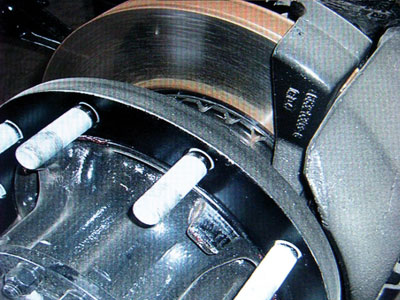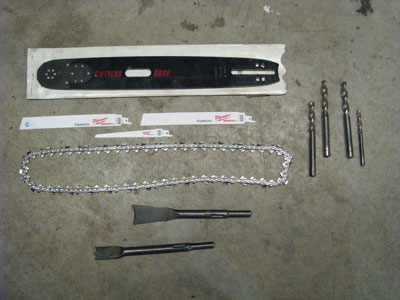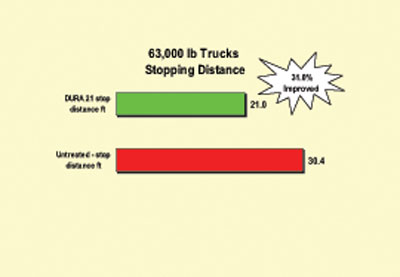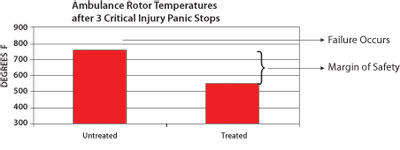
Equipment
Truck Tech: May 2011
According to Wikipedia, cryogenics is the study of the production of
temperature below -150 C (-238 F) and the behaviour of materials at
those temperatures.
April 28, 2011
By Chris Dennis
According to Wikipedia, cryogenics is the study of the production of temperature below -150 C (-238 F) and the behaviour of materials at those temperatures. You may wonder how this topic relates to fire apparatuses. Give me your attention for a few minutes and I will explain how your department can benefit, as mine has, from applying cryogenics to your fleet. Before I do this, I’ll explain the cryogenics process in terms everyone can understand.
 |
 |
| Formula 1 and Indy race car engine builders as well as Harley Davidson motorcycle engine builders are using cryogenics in the engine overhaul process. Photo by Chris Dennis |
Chainsaw blades, auto extrication tools and axe heads will all perform better, last longer and be safer if they are treated cryogenically. Photo by Chris Dennis |
Cryogenics is a phenomenon created by lowering the temperature of a metal in a controlled environment. For our purposes, this is done with liquid nitrogen.
This process increases the molecular structure of the object and causes the metal to become stronger and more durable; this will save your municipality money on parts and labour and it makes your tools, engines, transmissions and brake parts last longer. And, your department will save precious downtime; less time and energy will be spent on the continuous, labour-intensive process of dismantling and reassembling these items. Using cryogenics in your department also reduces the physical wear and tear on the technicians who do these repairs. Cryogenics makes fire trucks stop more quickly; it makes cutting blades last longer; and, by far, it makes the business we are in safer.
I now must take a moment and thank Bob Kay, chief mechanical officer of the City of Hamilton Fire Department in Ontario. Bob first began an in-depth study of this process in 2001 on fire trucks and ambulances. Some of the graphs below are from studies Bob did and shared with me when I started asking questions way back then.
In 2005, at a mechanical seminar at the Ontario Fire College in Gravenhurst, Ont., a company called Industrial Cryogenics Enterprises (ICE) did a presentation for fire department and fleet-mechanical technicians responsible for specialty tools and these sophisticated pieces of equipment we so fondly look after for the fire departments we represent and serve. ICE representatives told us how they would put a brake drum or a brake rotor in a vessel no bigger than a dishwasher and, through a process they created, drop the temperature of these items to -459.67 F, or 273.15 C, using liquid nitrogen. (My first thought was of a sci-fi movie in which the characters would deep freeze an alien and wake it up many years later, only to find out something had happened during the deep freeze and the alien was now a threat – as if it wasn’t before!) In 2005 Vaughan Fire Rescue began to cryogenically treat brake parts first, then, shortly thereafter, we started to treat anything else we felt would benefit from this process.
Metal items – let’s use a brake rotor as an example – is put into a chamber and cooled with liquid nitrogen for 20 to 24 hours to bring it down to about -320 F. ICE keeps its cooling and reheating times secret, as this is the make-or-break part of cryogenic treatment; the weight of an item determines how long this cooling process takes. The cost for the cryogenic treatment is about $1.65 to $1.70 per pound. ICE tells me that timelines are the secret ingredient. Once the part has soaked in the deep freeze for the particular amount of time, it is time to warm up the part. This is done naturally, and, at some point, the part is heated up again mechanically, for a specific amount of time, to lock the molecules into the spots to which they have moved.
The metal item being treated can be made in many different ways – for our purposes we will assume a liquid-poured-into-a-moulded-shape technique. When this liquid is poured and cooled, the molecules in the metal do not evenly spread out. Before treatment, the molecules are grouped tightly together. After being cryo-treated, the molecules are more evenly spread apart. Think of a group of people (molecules) huddled together on a cold day to keep warm. When that group separates, allowing more space among them (molecules), heat is lost in the voids. When cryo-treated steel is superheated through friction, with the molecules not so close together anymore, the steel cools quickly and more evenly and does not allow for hot spots to be created in the steel. (These hot spots come from superheated areas where the molecules are close together, or even touching; when the molecules are unable to cool separately, harder areas are created in the steel this can cause brake pedal pulsations and or steel to crack.)
The cryogenic processes will produce considerably longer wear life for almost any tool or dynamic part subject to friction or abrasion. Formula 1 and Indy racecar engine builders, and Harley Davidson motorcycle engine builders, use cryogenics in the engine-overhaul process. Turbochargers are designed and built to handle extremely high temperatures from exhaust and engine oils, as well as the heat produced from friction created from spinning at such high rpm. A reciprocating engine part also creates friction heat, causing engine parts to deteriorate quickly. Treat these components cryogenically so that the heat is evenly distributed and they will cool more quickly and last longer.
In my own fleet, I have an 8.3-litre diesel engine in a custom-cab fire truck. This truck was an emergency purchase and not a spec-built truck. It was not equipped with a transmission retarder or built-in engine brake. It did come with an exhaust brake installed just after the turbo charger. The exhaust-brake function works well to slow the engine but not without causing early turbo failure. When this occurs, the exhaust brake, when engaged, drops a trap door down into the exhaust pipe with which it is in line, sort of like a potato in the tail pipe. This dramatically slows the exhaust gas as it escapes through the tail pipe, and in turn, the exhaust gas backs up into the turbocharger, super heating it again and slowing down the turbo charger and the engine. This hot exhaust gas and heat, created from friction slowing the compressor tip fan in the turbo, prematurely takes out the centre bearing of the tip fan, causing the turbo to fail early. We at the mechanical division of Vaughan Fire and Rescue Service decided that if Indy car turbo chargers are treated through cryogenics to withstand friction and heat, we could do the same to our turbo. Cryo-treating the turbo changes the metal by realigning the molecules, and this allows this superheated turbo to self-cool more quickly and to last longer. If the turbo lasts, the truck will stay in service longer and I will save the city money by not replacing an expensive engine part long before its time. We will also save on brake parts, as the brakes won’t have to work so hard to slow the vehicle when the turbo begins to fail. So far, it has proven to be a good decision: a turbo charger that was once replaced yearly has now lasted four years.
Remember what we said about metal molecules being realigned? This is the part of the process that results in a huge cost saving from not having to replace brake parts that have been overheated; you’ll also notice an increased stopping distance, which is achieved because the heat dissipates more quickly, which makes braking more effective and safer. At Vaughan Fire and Rescue Service, we treat brake rotors and drums as well as hold-down kits wedges, pins, s-cams, slack adjusters and springs.
Through cryogenics, brake rotors last longer with little or no brake-pedal pulse, and breaking distance is reduced by not compromising the friction material or boiling brake fluid, thanks to treated metals.
 |
Graph 1 above shows the improvement in stopping distance of a 63,000-pound, Class 8 fire truck with air brakes.
Not only do the parts last longer, but the overall safe stopping distance has improved. If heat can be move away quicker, friction material stays cooler and reacts better. Brake failure will occur when brake components reach 760 F.
 |
|
In one experiment to test effectiveness after cryogenic treatment, ambulance rotor temperatures were measured with a heat-sensing gun after three critical injury panic stops from 20 miles per hour, both untreated and treated (see graph 2, above).
Not only was there a difference in temperature of the brake parts, but the hydraulic brake fluid was no longer boiled, meaning better stopping without brake-pedal fade. Brake-pedal fade occurs when brake fluid surpasses its boiling point and can no longer effectively apply hydraulically controlled components. When boiled, the fluid within the brake fluid releases gases, causing spongy braking, as unlike fluids are not compressible.
When you take out a new or freshly sharpened drill bit and begin drilling into the project you are working on, how long does it take before the bit tip is overheated and blue in colour? Metal on metal under pressure creates friction and heat. When you cryo-treat the drill bit, the heat is moved away and the bit lasts longer, resulting in less chance of the bit breaking due to heat stress. Chainsaw blades, auto extrication tools and axe heads will all perform better, last longer and be safer. It’s win-win situation.
In an already unpredictable business, cryogenics has proven to make parts last longer, save the municipality time and money, and keep our drivers, crews and technicians safer.
Chris Dennis is the chief mechanical officer for Vaughan Fire and Rescue Service in Ontario. Contact him at Chris.Dennis@vaughan.ca
Print this page